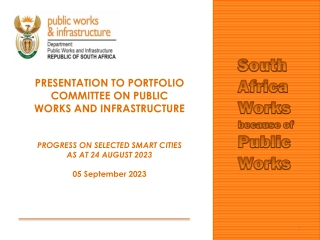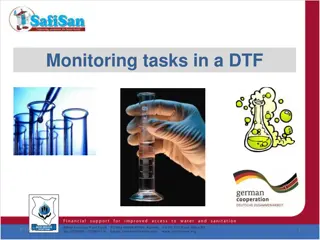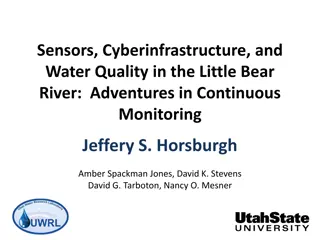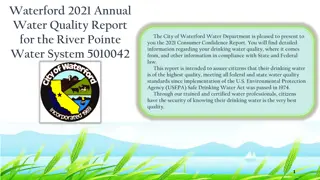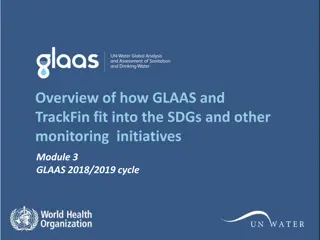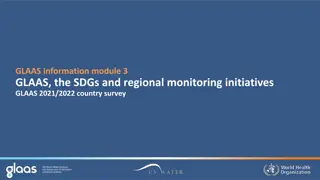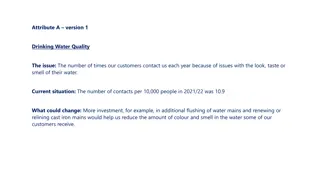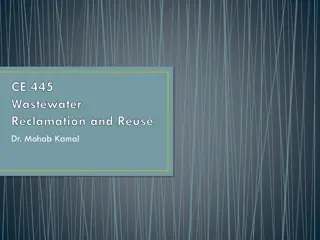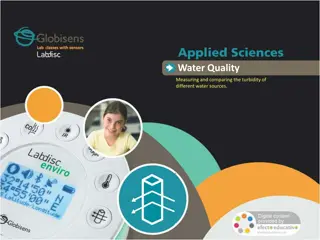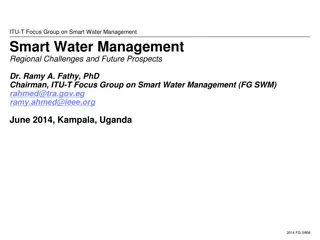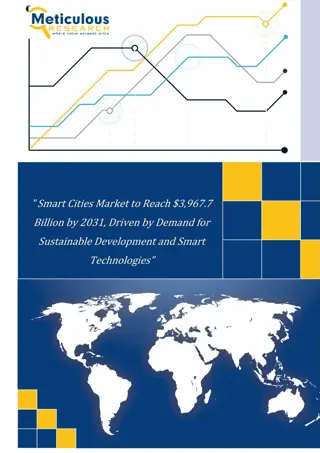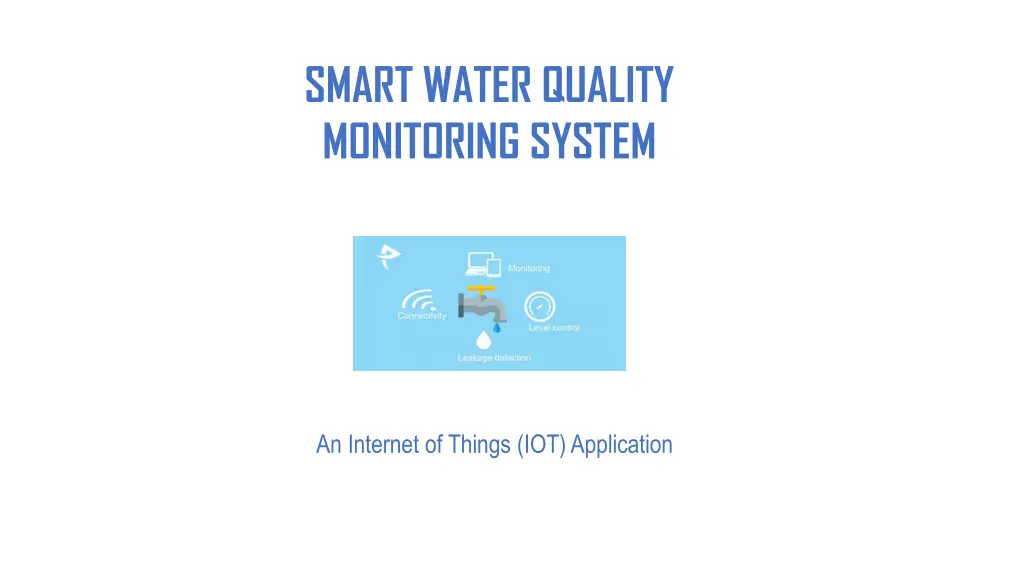
Smart Water Quality Monitoring System with IoT Application
Implementing a Smart Water Quality Monitoring System using IoT technology to address the pressing need for ensuring access to safe drinking water. The system aims to detect water quality issues in real-time, alert authorities, and maintain a database of water quality variations. Through the use of Raspberry Pi and essential sensors like pH, turbidity, and nitrate levels, this system offers a proactive solution to monitor and manage water quality efficiently.
Download Presentation

Please find below an Image/Link to download the presentation.
The content on the website is provided AS IS for your information and personal use only. It may not be sold, licensed, or shared on other websites without obtaining consent from the author. If you encounter any issues during the download, it is possible that the publisher has removed the file from their server.
You are allowed to download the files provided on this website for personal or commercial use, subject to the condition that they are used lawfully. All files are the property of their respective owners.
The content on the website is provided AS IS for your information and personal use only. It may not be sold, licensed, or shared on other websites without obtaining consent from the author.
E N D
Presentation Transcript
SMART WATER QUALITY MONITORING SYSTEM An Internet of Things (IOT) Application
INTRODUCTION INTRODUCTION Freshwater is a world resource that is a gift of nature and important to farming, manufacturing, and the life of living beings on earth. Due to the limited drinking water resources, growing population, rapid urbanization, and the excessive use of sea resources for salt extraction has significantly worsened the quality of water available to people. High use of chemicals, fertilizers in farms and directly leaving the polluted water from industries into nearby water bodies have made a huge contribution to the national water quality reduction. According to WHO, around 21% of deaths are caused due to contaminated water in India. Hence, there is a necessity to monitor & ensure the supply of purified drinking water for the people and industries to use.
PRESENT SCENARIO PRESENT SCENARIO Central Water Commission (CWC) monitors water quality, by collecting samples from representative locations within the processing and distribution system. Water samples from the site are taken and sent to the laboratory to be tested manually by analytical methods. Although by this method the various major parameters can be analyzed, but it has several drawbacks. It is time consuming and labor intensive. The disadvantage of this system is, water is not monitored seamlessly, and it always needs a human intervention.
PROPOSED SCENARIO PROPOSED SCENARIO The proposed water quality monitoring system is consisting of a Raspberry &basic sensors like pH, turbidity, water level detection, temperature & nitrate. Raspberry Pi Pi Continuous and real-time data sending (wirelessly) to the monitoring station.
OBJECTIVES OBJECTIVES To record depletion in water quality at the earliest. 1 To monitor whether the water quality is in compliance with the standards, and hence, suitable or not for the designated use. 2 To alert the concerned authorities and locals about the recorded depletion in the quality of water. 3 To create database of all variations recorded in water quality of given source for future study. 4
METHODOLOGY METHODOLOGY pH sensor Cloud Raspberry Pi Turbidity sensor Wi-Fi module Nitrate ion rod User Devices Collection & Transmission Storage & Monitoring Data Sensing
APPLICATIONS APPLICATIONS VILLAGE
OUTCOMES & UTILITIES Monitoring of Turbidity, pH & Temperature of water using various sensors provides unique advantage with wireless network. The system can monitor water quality automatically, and it is low in cost and does not require people on duty. The water quality testing is likely to be more economical, convenient and fast. The system has good flexibility. Only by replacing the corresponding sensors and changing the relevant software programs, this system can be used to monitor other water quality parameters.
CONCLUSION Use of various sensors and communication devices makes it easy to monitor the quality of water continuously. 1 We can get warning regarding the depletion of quality, react to it and trace its source at the earliest. 2 Authorities can conveniently keep a check the industries whether they are complying to the standards of waste water management. 3 Collected database can help researchers to carry out studies on water quality and management. 4

